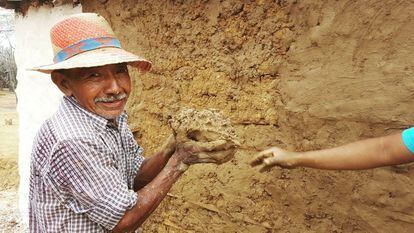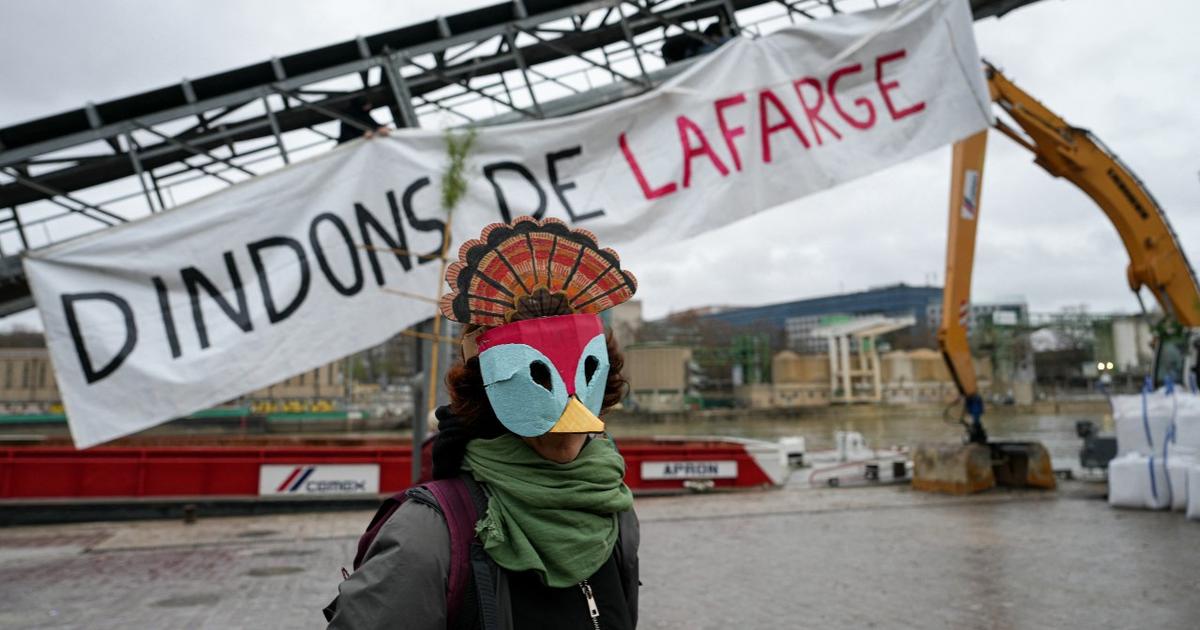EL PAÍS offers the América Futura section openly for its daily and global informative contribution on sustainable development.
If you want to support our journalism, subscribe
here
.
From 2004 to today, that is, in 18 years, China has used more cement than the United States throughout the 20th century.
The figure is staggering.
Andri Snaer Magnason tells it in his book
On time and water
and it is difficult to assimilate it, even more so, when one reads that the real estate bubble that the Asian giant experienced in 2010 “absorbed 50% of the total production of raw materials on the planet” .
The cement industry is one of the most polluting that exists.
It is estimated that its production is responsible for 6% of total global CO2 emissions.
For more than a century, chemicals and combustion processes were added to concrete, a material that was used in the past to build majestic enclosures that we still visit with surprise and are still standing, to speed up its drying and thus build faster.
We made cement our shelter and shelter par excellence and we linked it to progress.
However, commercial costs and its high demand meant that this material did not reach all territories in the same way, especially those remote and rural areas of the global south.
Despite the irrefutable empire of concrete that seemed to bury other construction possibilities, from those places, there are many who wonder: are there other ways to build a house?
What did past peoples do to live well without cement?
How was it built?
Do we have to continue depending on a material that has such high costs for the planet?
A man builds a house with mud in the desert area of La Guajira.Organizmo
"Building again with the land, with what the territory gives us, is one of the most important ways for the rural areas of our countries to maintain self-management of their own well-being," says Ana María Gutiérrez, leader and co-founder of the Organizmo project , a training, research and empirical construction center that has been working with different communities in Colombia for 14 years to revive knowledge about construction that they already had and that they were forgetting.
“After stigmatizing the original and rural communities that their construction techniques were forms of poverty, that progress was directed only towards cement and brick, a systematic rejection of their forms of construction was established in the minds of the peasants. make their homes and their ways of planting, also rejecting their aesthetics”,
The mixture between the soils of each territory, with its climates and ecosystems, derived in different forms of construction that the native peoples were implementing and transmitting as knowledge.
The bahareque, walls made with interwoven sticks or reeds with a mud finish, was implemented in hot areas because the technique made it possible to build cool houses.
The stepped wall or the adobe were techniques that, on the contrary, were used more in cold regions.
But with the preponderance of cement as a material that made it easier and faster to build and a rejection of these forms of culture that went slowly, with the cycles of nature that made it necessary, for example, to wait for the right moon to cut the guaduales or Waiting weeks for the earth to crack and harden, many of these techniques disappeared or became unpopular.
“Each of these techniques has climatic issues that no other material solves better.
Deserts, such as that of La Guajira, in the north of Colombia, for example, are ideal areas for construction with earth, because the earth produces the ideal thickness that brings freshness.
But now in these areas the communities reside in houses that are cement ovens where they cannot even be.
That is where the dialogue of promoting, accepting and motivating local soils and resources to build arises,” explains Gutiérrez.
A man weaves palm leaves for a roof. La California (Organizmo)
In the work that Organizmo has done with communities such as the Ticuna and the Murui-Muinani, in the Amazon;
with the Piaroa, in the Orinoquía and Vichada and with the Emberas and the Afro communities in the Colombian Pacific, they were learning that many things that they thought they could teach the native peoples in architecture, were misnaming them, or that, much knowledge that they believed was an innovation, were things that already existed in the heritage of those peoples who have ancient information on how to live and survive in the jungle.
It was in this dialogue and mutual learning that they focused their work on three fronts.
Given the evidence that one cannot think only of changing the materials to build a house, the training center has linked knowledge about construction, the food security of the communities and the way of managing their waste.
Thus, they work in dialogue and learning from them to build sustainable habitats: houses that have solar energy, that use gray water and rainwater, that have been built with local soils, that have woven or green roofs.
A search for shelter maximizing local resources.
One of his greatest experiences has been around the construction of dry toilets, an ideal technology for places where there is no water, there is no way to build septic tanks or where there is no rainwater.
"This is an intuitive technology, that is, it has been created intuitively by many peoples, to hygienically break down human feces and compost them."
Hand in hand with bioarchitecture, they also work on ecological restoration, developing orchards, composting and vermiculture.
Finally, they work on the recovery and permanence of arts and crafts, cultural expressions that allow communities to take root in their land.
"What we do in the territory is to make the abundance they have visible, we go and see what there is and how we can work with it from the community", explains Ana María Gutiérrez who adds: "We don't like to talk about sustainable constructions, because we don't there is nothing right now that is sustainable.
We speak rather of regeneration processes, that is, how we can regenerate ourselves socially, culturally and ecosystemically and reweave our society from the roots of the territory”.
People work in a crop field within the campus of the training center. La California (Organizmo)
However, with the new realities of ecosystems, it seems almost illusory to think that native and rural peoples now have the same resources and raw materials that their ancestors had decades ago.
“That is where ecological restoration comes in, being such a priority issue for bioconstruction.
You cannot reach a community and tell them: No, don't use zinc tiles, keep weaving your divine thatched roofs! If straw a few years ago was an hour's walk away, and now it's three hours away.
That is why it is necessary in this type of project to take a holistic approach and understand where the raw material is, understand how we are going to maintain a long-lasting shelter technique, that is, how we are going to plant that palm again for our roofs, when we are going to reseed”.
For Ana María Gutiérrez, this whole process of transformation at the hands of bioarchitecture is possible only if the stigma of backwardness that condemned these techniques to oblivion can be shaken and spaces are reopened to generate this appropriation in the communities with their own knowledge and with a lineage that is lived when it is remembered.






/cloudfront-eu-central-1.images.arcpublishing.com/prisa/YEMKJKRFORB4RFZV4MIFCUN5JY.jpg)

/cloudfront-eu-central-1.images.arcpublishing.com/prisa/5BXUKKEUHRB45CXJXXPGMWBHYM.jpg)
